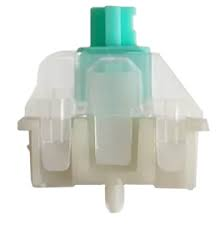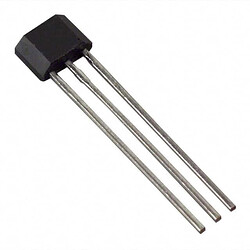I was brainstorming a bit last night about how one might approach hardware for the keys of an Eigen-like instrument from a small scale hardware-hacker/DIY perspective.
A general outline in my mind has begun to form.
I think the optical tech they used in the true Eigenkey is definitely going to remain out of reach for the hobbyist, at least for now. Even among industrial control hardware, I only found one example that was even in the same vein, and that one appears to be a prototype produced in 2017 that has been inactive since then. Eigenlabs beat them to the punch by a decade.
If I set aside the idea of using optical tech, I think the next best bet is hall effect sensors - the underlying tech for high-end gaming controllers that want to avoid the “stick drift” that plagues potentiometer-based joysticks. With something like the TMAG5170 or TMAG5273 IC, you can measure changes in magnetic field across three dimensions, and this is often used for joystick-like applications.
Because it’s a 3d hall effect sensor, you should be able to pick up not only the pitch and yaw (like a typical thumbstick on a game controller), but also overall downward travel as the button is depressed downward (which is not a typical motion that game controllers are built to capture, but the Eigenkey is).
At this point, the trickier next step would be to design a DIY-3D-printable key housing for the magnet that facilitates proper movement and return of the key within the instrument neck. This could potentially be done with mechanical springs, but perhaps it’s worth trying to use magnets for this as well, taking inspiration from Riskable’s “void key” design for magnet-levitated computer keyboard keys. The 3d models for these are generated from OpenSCAD files which Riskable open-sourced here.
In the “void key” design, each key uses 3 cheap magnets to provide springiness and tactile feedback - one in the movable key, one below that repels it from the bottom of its travel, and one above that attracts it back to the top of its travel. An Eigen-like key has more degrees of freedom, so it probably needs some more magnets involved, but it still seems tractable - one can imagine a key that is more or less free-floating inside its housing (not constrained to a single axis of travel), and the only thing that causes it to return when the instrument player is done depressing it is a magnetic force that snaps it back to its inert position.
The other nice thing that lends simplicity and elegance to the “void key” design is that the same magnet(s) in the key that are used to return it to its position can be measured by the 3D hall effect sensor to measure how much the key has been displaced from its neutral position - so the magnet is serving “double duty”. And indeed, in the computer keyboards that Riskable has built with the “void key” design, it is a hall effect sensor that detects when the key is depressed - so there is precedent for this “double duty” design.
To calibrate the magnetic measurements, you likely want the key housing to have a sort of “funnel” at the top and bottom for the free-floating key to settle into when either fully released or fully depressed, so that you have two precise/repeatable places to measure as the min and max travel.
One thing to be worry about is “leaking” of magnetic field changes from other nearby ‘active’ keys affecting the hall sensor for a key that is supposed to be ‘inactive’. You could try to compensate for this in software/firmware, but you risk making the keys less responsive, so it’s best to try to eliminate the effect in the physical design as much as possible first.
Definitely seems like an interesting project to take on. It won’t match the incredible engineering of the “true” Eigenkey, but it may be responsive enough to be cool to play as an instrument. Perhaps interest in DIY Eigen-like instruments would drive consumer and commercial interest in the high-end “true” Eigenharps as well.




